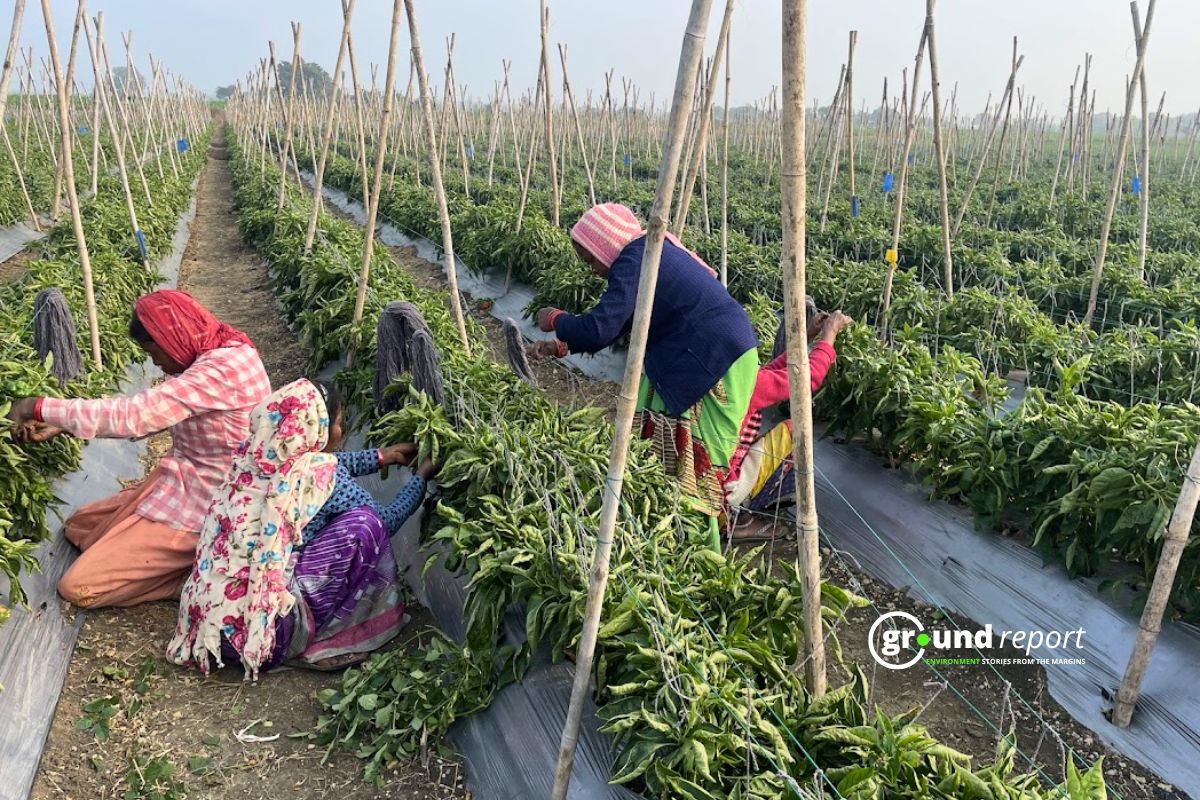Scientists and farmers have long debated the impact of cover crops—plants used to cover the ground after harvesting main crops—on subsequent crop yields. Numerous studies have been conducted on this topic, each yielding varying conclusions.
A recent study conducted by researchers at the Indiana University School of Science in Indianapolis aimed to shed light on this debate. Pooling data from over 100 field trials conducted worldwide, the researchers found that cover crops have an overall positive effect, increasing crop yields globally by 2.6 per cent. Notably, the study highlighted the significant yield gains observed when using legumes such as peas, vetch, and clover as cover crops.
Published in the journal Field Crops Research, the research aims to address the challenges faced by farmers, including soil erosion and nutrient loss. By demonstrating the positive impact of cover crops on crop yields, the study seeks to increase the adoption rate of cover cropping practices among farmers, ultimately benefiting both agriculture and the environment.
Study: Cover crops boost yields
Led by Ph.D. student Yu Peng, the research team employed a comprehensive approach, utilizing literature synthesis and meta-analysis to analyze the gathered data. Over 1,000 records of field-based yield data were collected and examined, considering factors such as cover crop type, soil texture, soil water conditions, aridity, cover crop duration, and other management practices.
“Studying in Indiana, surrounded by a rich agricultural heritage, I’ve witnessed firsthand challenges faced by farmers, including soil degradation and nutrient loss,” Peng said. “This research aims to boost the adoption rate of cover crops by addressing farmer concerns about potential yield loss in the main crop, thereby benefiting agro-environments.”
Leguminous cover crops exhibited a significant 9.8% increase in yield compared to non-leguminous varieties such as rye, oat, canola, and mixed cover crops, which did not show statistically significant differences. Moreover, the introduction of leguminous cover crops without additional fertilization of main crops resulted in an impressive 21.8% yield increase.
Corn, the primary crop in the Midwest and the U.S., along with barley, another major U.S. crop, experienced substantial yield enhancements of 4.7% and 8.3%, respectively, indicating their responsiveness to cover cropping. Furthermore, data suggests that utilizing leguminous cover crops could potentially yield even greater improvements.
Researchers noted that cover crops are particularly beneficial under conditions of limited nutrients. Notably, regions with rainfed drylands demonstrated increased yields with cover cropping, while those with rainfed non-drylands did not exhibit significant impacts. Additionally, a noteworthy 10.5% yield increase was observed when cover crops were applied without additional fertilizer, but this increase dropped to 1.8% when combined with fertilizer treatments.
Soil type affects cover cropping
Coarser soils such as sandy loam and loamy sand tended to show increased yields under cover cropping practices. Conversely, fine-textured soils like clay-loam and clay exhibited reduced yields under cover cropping, indicating a negative impact on yield in such soil types.
“Not every cover crop is suitable for every field management practice in every environment,” Peng said. “My hope is this article leads to increased adoption and smarter cover cropping methods by offering comprehensive guidance in choosing optimal cover crop strategies based on their objectives, including the type of cover crops to use, which management practices to combine with and considerations of local meteorological factors.”
Cover crops play a crucial role in controlling soil erosion, enhancing soil moisture, improving soil structure, and increasing organic matter content. Lixin Wang, a professor in the Department of Earth and Environmental Sciences and the corresponding author of the study, expressed his aspiration that this research will stimulate broader acceptance of cover cropping. He emphasized that apart from the advantages it offers to farmers, the widespread adoption of cover crops holds significant benefits for the Earth’s environment.
“Agriculture leaves a large environmental footprint,” Wang said. “Often, it pollutes water and produces plenty of greenhouse gases. That’s why we want to minimize the environmental impact while also ensuring we have a sufficient crop yield. We believe cover crops are a potential tool to help achieve this.”
Research indicates that cover crops play a vital role in controlling soil erosion, enhancing soil moisture, improving soil structure, and increasing organic matter. It suggests that broader adoption of cover crops would not only be advantageous for farmers but also beneficial for the environment.
Quoting the research findings, the researcher highlighted the significant environmental impact of agriculture, often leading to water pollution and greenhouse gas emissions. To mitigate these impacts while ensuring sufficient crop yields, the implementation of cover crops emerges as a crucial tool.
Following the provision of scientific evidence demonstrating the environmental benefits of cover crops without compromising yield, the researchers emphasized the exploration of additional contributions cover crops can make. If cover crops prove effective in reducing greenhouse gas emissions, farmers could effectively cost-effectively combat global warming.
Follow Ground Report for Environmental News From India. Connect with us on Facebook, Twitter, Koo App, Instagram, Whatsapp and YouTube. Write us on GReport2018@gmail.com and subscribe our free newsletter.
Don’t forget to check out our climate glossary, it helps in learning difficult environmental terms in simple language.









